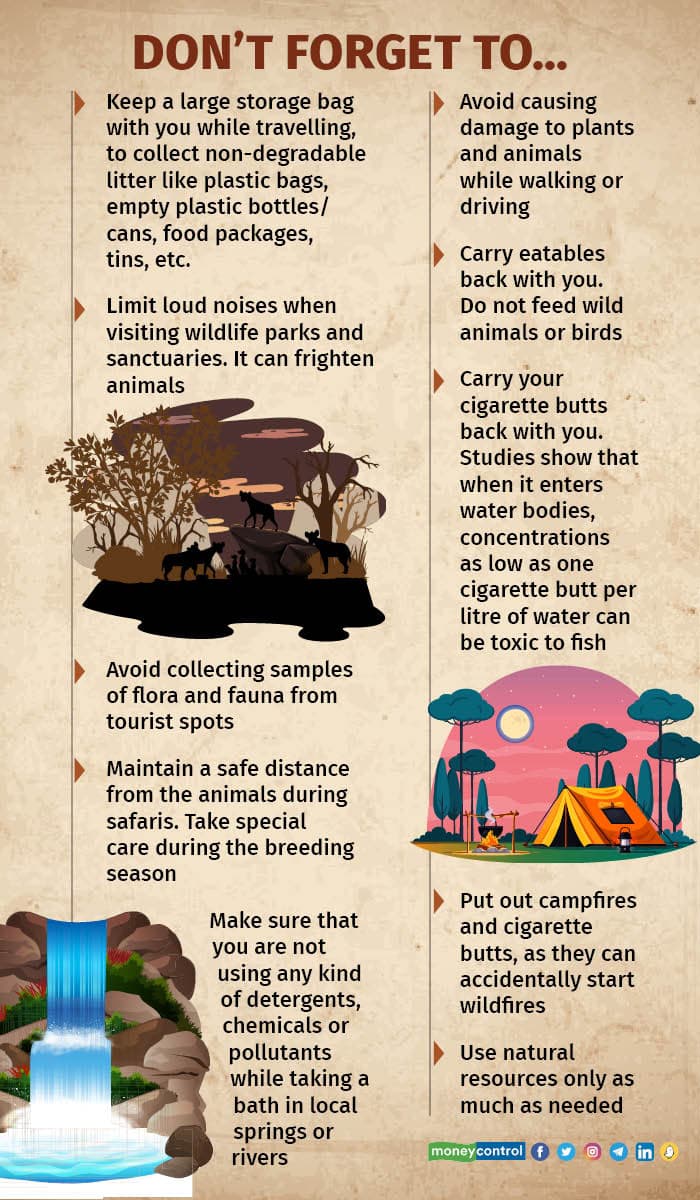



This month, a Supreme Court panel sought curbs on tourism within tiger reserves and wildlife sanctuaries in India after discovering illegal constructions had been carried out to establish a tiger safari within the buffer zone of Uttarakhand’s Jim Corbett National Park. It prompted the Supreme Court to put a stop to all construction activities within the core areas of tiger reserves, national parks and wildlife sanctuaries.
“The concept of protecting these is to permit animals to reside in their natural environs and not artificial environs. We, therefore, also call upon the National Tiger Conservation Authority (NTCA) to explain the rationale behind permitting such safaris within tiger reserves and national parks,” ordered a bench comprising Justices B.R. Gavai and Vikram Nath.
Ecotourism is often promoted as a more sustainable form of tourism. It stems from the belief that instead of harming the environment, it helps preserve it by providing funds for conservation. It also enables locals to benefit economically from wildlife and nature, thus providing them with an incentive to protect them. As per a report by ResearchAndMarkets.com, the global ecotourism market was estimated to be $270.41 billion in 2022 and it is projected to reach $526.16 billion by 2027. India is one of the prime markets that is likely to see growth, with a report projecting 15 percent growth annually from 2021 to 2027.

One major segment of ecotourism is observing and interacting with animals in their natural habitats. It offers several advantages. For instance, in Africa, the International Gorilla Conservation Programme recognises that gorillas and tourism are now inextricably linked, with tourism providing the funds needed for their conservation.
In India, too, it has aided the conservation of threatened species — such as the snow leopard in Ladakh — by increasing awareness of their plight globally and encouraging local communities to let them prosper to boost tourism.
 Snow leopard in Ladakh. (Photo credit: Ministry of Tourism MOT India)
Snow leopard in Ladakh. (Photo credit: Ministry of Tourism MOT India)Also see: Velavadar Blackbuck Sanctuary, an ode to India's biodiversity
Deep impactMassive growth in the industry, however, is also harming wildlife through stress, disturbance of daily routines, and even increased transmission of disease.
“Irresponsible tourism does take a toll. When people get too close to wild animals to take photos, feed them, leave behind plastic waste, make loud noises to get a reaction, or destroy nests and natural habitats for better pictures, they have a detrimental effect on local wildlife and their ecosystem,” says Gajender K. Sharma, country director, World Animal Protection India.
Also read: Govt making holistic efforts for wildlife sustainability, protection
For instance, a study in Kenya’s famous Masai Mara found that high levels of tourism led to a dramatic reduction in the number of cheetahs able to raise their young to independence. In India, too, a study conducted by the CSIR-CCMB Laboratory for Conservation of Endangered Species on tigers in Kanha and Bandhavgarh has shown significantly higher concentration of stress hormones during the tourism period as compared to the non-tourism period.
Also read: Madhya Pradesh: Tiger found dead in Bandhavgarh Reserve
Frequent visits by tourists also leads to the phenomenon called “habituation”, which results in wild animals becoming used to the presence of humans. It can make them vulnerable to predators and poachers. The continuous presence of visitors also tends to disturb wildlife and disrupt breeding patterns. For instance, tourists clicking photos of Olive Ridley Turtles using flash on beaches in Goa resulted in some of them going back to the sea without laying their eggs this year.
 Olive Ridley turtle. (Photo: Pinku Halder via Wikimedia Commons)
Olive Ridley turtle. (Photo: Pinku Halder via Wikimedia Commons)Supplementary wildlife feeding, too, can cause extreme alterations of natural behaviours, create dependency and aggression, and lead to health issues. “Artificial feeding by visitors en route to Ladakh’s Pangong Lake made Himalayan marmots leave their natural diet in favour of chips and biscuits, making them obese. They returned to their regular food during the pandemic when lockdowns were in place, but went back to a diet of processed food once travel restrictions were lifted and tourists returned,” says Smanla, who runs an eco-stay near Pangong Lake.
Balancing actSo what can tourists do to limit their impact on wildlife? More often than not, travellers fall prey to “greenwashing”, the process of passing off services as wildlife-friendly when they are not. Keeping this in mind, conduct extensive research before booking a visit to a wildlife sanctuary or national park, and check if they prioritise the interests of animals over profits, or not.
Parks where wild animals are artificially fed - to increase sightings - should be avoided. Tourists must also be encouraged to respect nature and learn about wildlife through quiet observation.
“National parks and wildlife sanctuaries can also restrict the number of tourists and safaris, and devise restricted zones that afford animals the possibility of avoiding interaction with people altogether,” says Sharma. This method has already been applied successfully in certain parts of the world, including in the Galapagos Islands.
 (Photo: Pixabay/Pexels)
(Photo: Pixabay/Pexels)When managed carefully, wildlife watching can be a positive agent for change for the environment. Proceeds from this form of tourism can counter demands to use the natural resources, protect wildlife and provide locals with an incentive to preserve their habitats. It can also create awareness among visitors about conservation. The key, however, is to protect the animals that the industry depends on.
Discover the latest Business News, Sensex, and Nifty updates. Obtain Personal Finance insights, tax queries, and expert opinions on Moneycontrol or download the Moneycontrol App to stay updated!
Find the best of Al News in one place, specially curated for you every weekend.
Stay on top of the latest tech trends and biggest startup news.